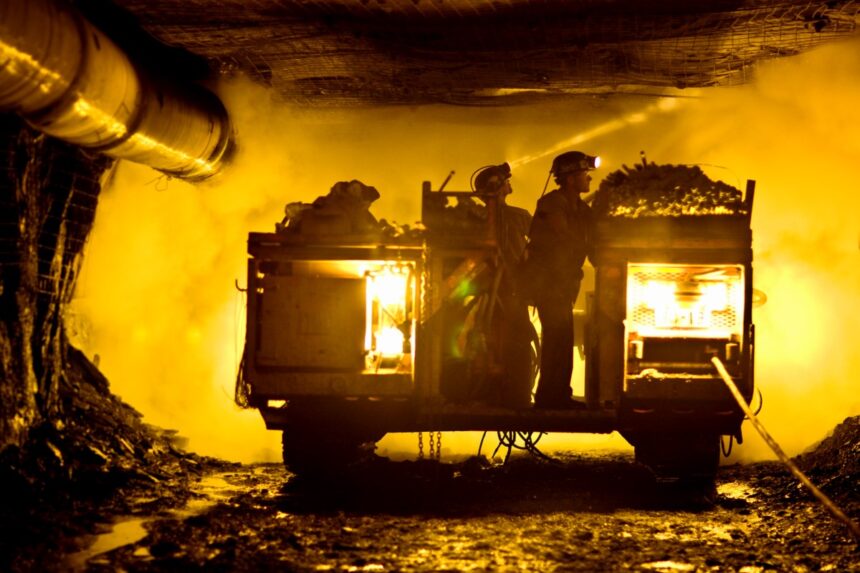The recent calls for a national resource development strategy have never been more urgent. As our country faces mounting economic pressures—from housing affordability to healthcare funding—we’re sitting on a paradox that would baffle economists anywhere else: tremendous natural wealth alongside stagnating productivity and living standards.
Having covered Canadian business for nearly two decades, I’ve watched our resource development conversations become increasingly polarized, missing the pragmatic middle where prosperity actually happens.
The Business Council of British Columbia recently published a compelling case for what they call a “grand bargain” to unlock Canadian prosperity. It’s a proposal that merits serious attention from Ottawa to Bay Street to kitchen tables nationwide.
“Canada needs to elevate the strategic importance of its resource industries and use our resource wealth to fund the transition to a lower-carbon economy,” writes Jock Finlayson, the Council’s senior policy advisor. This isn’t resource exploitation dressed in new language—it’s a recognition that our environmental and economic goals need alignment, not opposition.
The fundamental premise is straightforward but profound: develop Canadian resources responsibly, generate substantial government revenues, and direct a significant portion toward climate initiatives and social priorities. But why now?
For one, global demand for critical minerals needed for clean energy technologies is surging. The International Energy Agency estimates demand for minerals like lithium, graphite, and copper could increase by 500% by 2050. Canada has these in abundance.
But our competitors aren’t waiting. Australia—with similar governance structures and environmental values—approves major mining projects in 18-24 months. Canada? Try 5-15 years. This isn’t about environmental carelessness—it’s about efficiency and clarity.
Ken Coates, a public policy professor at the University of Saskatchewan, told me in a recent interview: “We’ve created a system so complex and unpredictable that even projects with strong Indigenous partnerships and world-class environmental standards can’t navigate it with any certainty.”
The economic opportunity is staggering. The Business Council estimates that a more efficient resource development framework could generate over $200 billion in additional GDP over a decade—roughly $5,000 per Canadian. That’s not small change when household budgets are stretched thin.
Critics will argue this approach simply doubles down on extractive industries when we should be pivoting away. But this misunderstands both global energy transitions and economic realities.
“The transition to net-zero will be mineral-intensive,” explains Margareta Dovgal, Resource Works executive director. “We can either import those minerals from jurisdictions with lower standards, or produce them here with world-leading environmental and social governance.”
Indigenous economic participation forms another crucial pillar of this strategy. The First Nations Major Projects Coalition now represents over 90 Indigenous communities seeking meaningful stakes in resource development. Their chairperson, Chief Sharleen Gale of Fort Nelson First Nation, has emphasized repeatedly that “First Nations are not opposed to development—we oppose being excluded from development.”
The resource strategy’s most compelling feature might be its potential funding mechanism for Canadian priorities. The Council proposes directing 25% of incremental resource revenues toward climate initiatives, 25% to Indigenous economic reconciliation, and the remainder to debt reduction and social programs.
This isn’t theoretical. Norway’s sovereign wealth fund, built from oil revenues, now holds over $1.4 trillion in assets—about $260,000 per Norwegian citizen. While Canada’s circumstances differ, the principle remains: resource wealth can be transformed into intergenerational assets.
What stands in the way? Primarily, policy uncertainty and regulatory complexity. Projects like the Trans Mountain Pipeline expansion saw costs balloon from $7.4 billion to over $30 billion, partly due to regulatory delays and changing requirements.
“Investors need predictability,” says Heather Exner-Pirot, a resource policy analyst I spoke with last month. “Capital goes where it’s welcomed and stays where it’s well-treated. Canada has developed a reputation for neither.”
The key to this grand bargain is finding common ground between environmental protection, Indigenous rights, and economic development. This isn’t easy, but the alternative—continued polarization and missed opportunities—serves no one.
Environmental advocates should recognize that global climate goals require minerals Canada possesses. Business leaders must embrace Indigenous partnerships and world-leading environmental standards. And governments need to create clear, efficient regulatory processes that maintain rigorous standards without endless timelines.
The Business Council’s proposal requires serious engagement from all stakeholders. But it offers something increasingly rare in Canadian policy discussions: a pathway that doesn’t force false choices between environment and economy, but rather recognizes their interdependence.
As our competitors move decisively to secure their place in the resource economy of the future, Canada risks being left behind—not because we lack resources, talent, or values, but because we lack the collective will to find pragmatic solutions.
A national resource strategy wouldn’t solve all our economic challenges overnight. But it could transform underperforming assets into tools for addressing our most pressing problems while positioning Canada for leadership in a changing global economy.
The question isn’t whether we can afford to pursue such a strategy. Given the mounting pressures on our standard of living, it’s whether we can afford not to.






